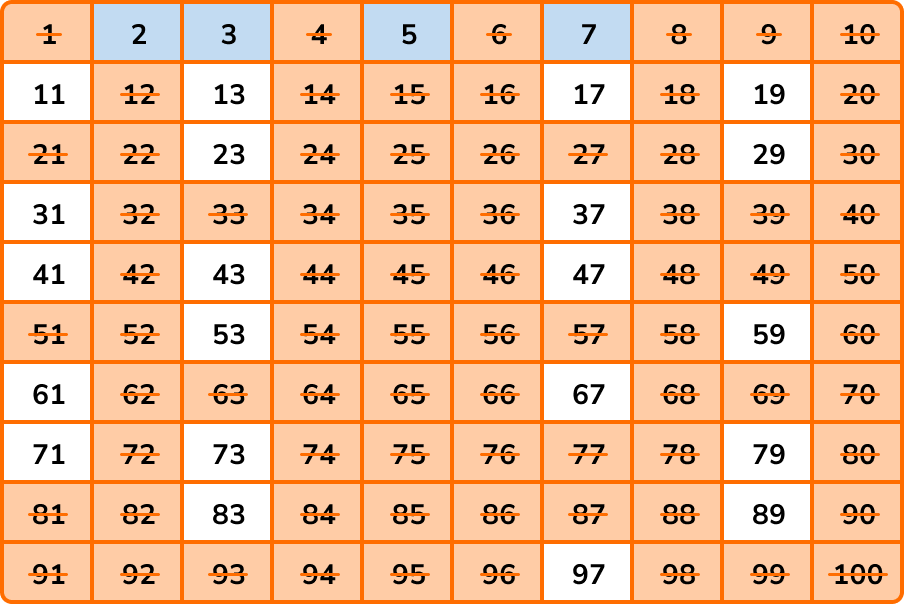Prime Number Examples – Meaning, How To Identify, And Examples Of Prime Numbers From 1-100
Table of Contents
For centuries, mathematicians have been fascinated by the concept of prime numbers. These numbers have a distinct characteristic that distinguishes them from other numbers. It holds special importance and is used in various applications.
Their captivating properties and patterns, which are difficult to predict, continue to intrigue researchers and enthusiasts.
What Are Prime Numbers?
Prime numbers are integers greater than 1 and can only be divided by one and itself. It cannot be formed by multiplying any other whole numbers. In other words, prime numbers are positive integers with no factors other than 1, making it impossible to divide by any different number except 1 and itself.
Approach To Identifying Prime Numbers

- Write the digits from 1 -100 in a grid with both horizontal and vertical lines.
- Retain the value of 1 as it is because all prime numbers are larger than 1.
- Identify the number 2, which is a prime number and mark it. Leave unchanged all the numbers that are multiples of 2, such as 4, 6, 8, 10, and so on.
- Recognize the number 3, also a prime number, and mark it. Preserve the numbers that are multiples of 3, such as 6, 9, 12, 15, and so forth, without making any changes.
- Mark the number 5 and retain the numbers that are multiples of 5, such as 10, 15, 20, 25, and so on, without altering them.
- Mark the number 7 and maintain all the numbers that are multiples of 7, such as 14, 21, 28, and so forth, without modifying them.
- The table will only contain prime numbers that are marked at the end.
3 Things To Know About Prime Numbers
- 0 and 1 are not considered prime or composite numbers.
- The number 2 is the only even number considered prime, whereas all other even numbers can be divided by 2 and, therefore, cannot be classified as prime numbers.
- If a number exceeds 5 and ends with 5, it cannot be a prime number. This is because any number that ends with 5 can be divided by 5, making it a composite number instead of a prime number. Therefore, there are no prime numbers greater than 5 that end with a 5.
Examples Of Prime Numbers;
2, 3, 5, 7, 11, 13, 17, 19, 23, 29, 31, 37, 41, 43, 47, 53, 59, 61, 67, 71, 73, 79, 83, 89, 97.
